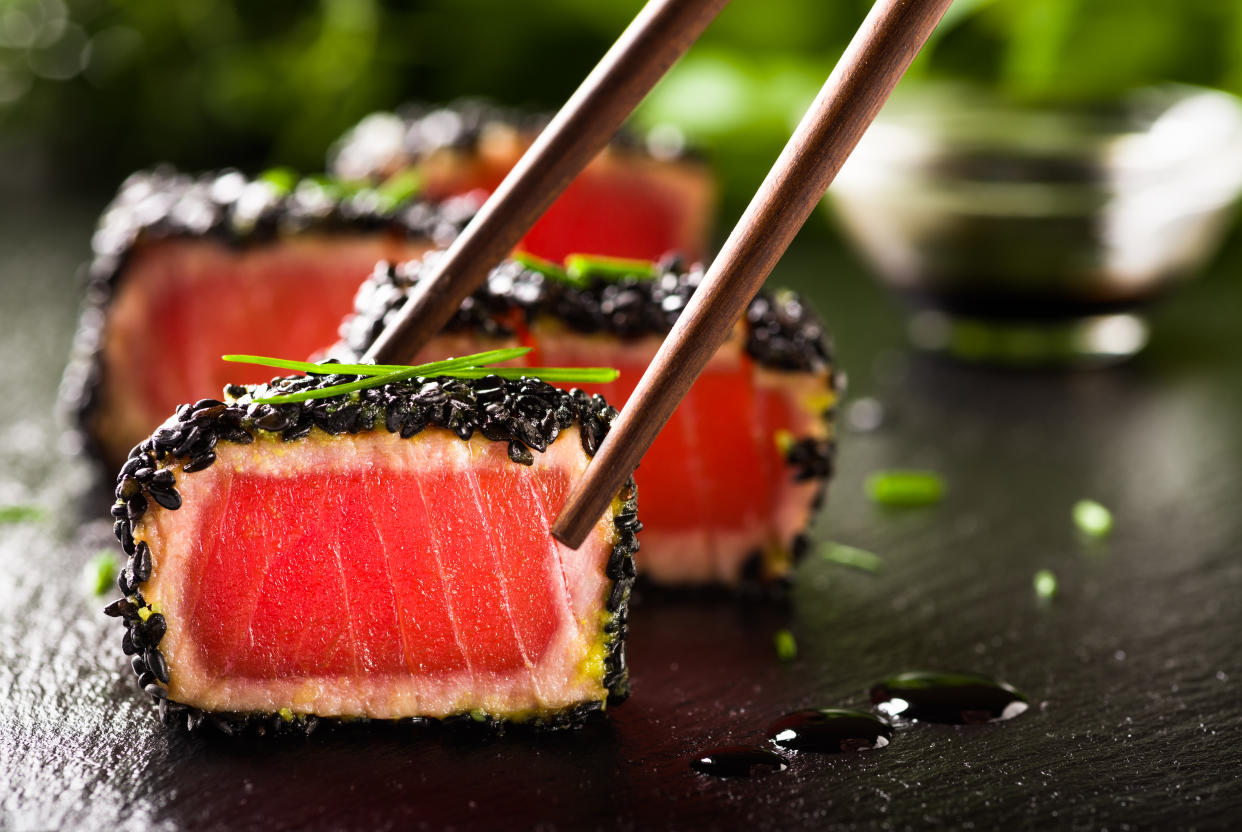Limit eating tuna sushi due to 'highly neurotoxic compound', experts warn

With heart-healthy salmon, tuna and avocado, many consider sushi to be a nutritious meal they can enjoy regularly.
Fish is a source of protein, with oily varieties like salmon and mackerel also rich in essential fatty acids that may ward off heart disease, promote healthy foetal development and even preserve brain health.
In excessive amounts, however, fish can contain heavy metals. Rice – a sushi staple – is a low-fat carbohydrate, however, the staple grain is also made up of arsenic.
With "scarce information" on the "potentially toxic elements in sushi", scientists from the Centre for Environmental, Food and Toxicological Technology (TecnATox) in Spain analysed hundreds of the cuisine's classic dishes.
Read more: Oily fish ease migraines
Results – published in the journal Food and Chemical Toxicology – reveal the most popular meals can contain excessive levels of "the highly neurotoxic compound" methylmercury, with the risk varying among different age groups.
The team therefore recommends people opt for "varied" and "moderate" amounts of sushi, with "limited" tuna dishes.

Sushi consumption has increased significantly since the last quarter of the 20th century, with the number of restaurants that serve the cuisine "in constant expansion".
Nearly half (45%) of the Spanish population are said to eat sushi at least once a month.
Read more: Fish oil supplements may combat antibiotic resistance
Concerned about contaminant exposure, the TecnATox scientists analysed hundreds of pieces of sashimi – raw fish, nigiri – balls of rice with fish or seafood on top, and maki – a seaweed roll stuffed with rice, raw fish or vegetables.
The team measured the concentrations of various toxic elements – cadmium, nickel, lead, mercury, arsenic and methylmercury.
Watch: Giant sushi cake made by LA chef
The results reveal the maki and nigiri dishes had significantly more arsenic than sashimi, likely due to the latter lacking rice.
Mercury and methylmercury – a very poisonous form of mercury that forms when bacteria react with mercury in water, soil or plants – were also higher in the tuna dishes. These elements "bioaccumulate", gradually build up over time in a living organism, with tuna a top predator.
Read more: Strawberries improve heart health among obese people
Eating eight pieces of sushi in adults or teenagers and three pieces in children – the "average intake" for these age groups – were later linked to elevated nickel and lead levels within the consumers' blood, but still within safe margins.
Nevertheless, the methylmercury exposure among teenagers "exceeded the tolerable daily intake". In children and adults, the exposure "was below, but close to that threshold".
"The most worrying finding concerns methylmercury, a highly neurotoxic compound, for which there was an estimated exposure of 0.242µg [micrograms] per kg of bodyweight in adolescents – a value higher than the safe daily limit established by the European Food Safety Authority", said study author Dr Montse Marquès.
Based on their results, the scientists "recommend people combine eight pieces of salmon-based maki, nigiri or sashimi or maki containing unagi (eel), and limit their consumption of any type of sushi containing tuna".
With sushi generally making up just one meal, other foods eaten throughout the day may further contribute to a person's contaminant exposure. Vegetables, pulses and cereals also contain nickel, for example.
The scientists have stressed sushi is still a nutritious meal, but should be enjoyed in moderation.
Watch: Is robot-made sushi any good?



